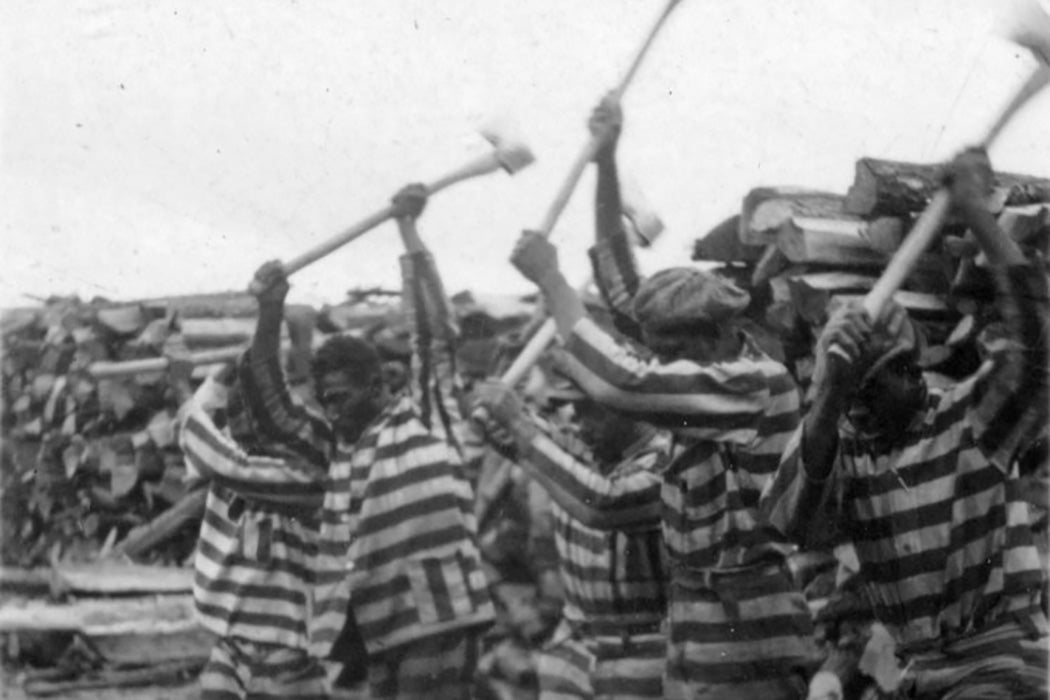Historian Heather Ann Thompson describes mass incarceration in the United States in the late twentieth and early twenty-first centuries as being “without international parallel or historical precedent.” In 2006, for instance, “one in every thirty-one US residents was under some form of correction supervision, such as in prison or jail, or on probation or parole.” Despite this, Thompson asserts, “historians have largely ignored the mass incarceration of the late twentieth century and have not yet begun to sort out its impact on the social, economic, and political evolution of the postwar period.”
People of color have been affected the most, with “African American men experiencing the highest imprisonment rate of all racial groups.” At the turn of the millennium, there were 188,500 more Black men and women in “penal institutions than in institutions of higher learning.”
Thompson draws connections between mass incarceration and the decline of the American labor movement in the last quarter of the twentieth century. Convict labor, largely ended by the mid-twentieth century, has returned. Thirty-six states now grant “private companies complete access to prison labor.” Well-known brands like Starbucks, Walmart, Nike, Victoria’s Secret, Allstate, and many others have leased convict labor in our time.
Thompson argues that the same forces demanding access to unfree labor are also the ones backing “aggressively antilabor” politics. For example, a Texas circuit board maker, an Oregon linen service, a Georgia recycling plant, and Konica’s photocopy repair division all shifted from minimum wage labor or better to convict labor, which pays as little as 25 cents an hour.
Meanwhile, we’ve seen the rise of private prisons, which make money from locking up as many human beings as possible. Mass incarceration thus means “major profits for companies that could provide prison goods and services—items ranging from telephones to tampon and tasers.” Prisons have become a major economic—and political—force in conservative rural areas, where they are often located.
Weekly Newsletter
This means that these areas have an electoral advantage because prison populations located within their districts have been counted as part of the total population, even though the prisoners aren’t allowed to vote locally. This has affected state politics in places as different as New York, Colorado, Florida, Texas, and California. Meanwhile, the disenfranchisement of ex-felons, a form of continuing punishment, has given a “small but clear advantage to Republican candidates in every presidential race from 1972 to 2000.”
Thompson doesn’t argue that mass incarceration caused the radical transformations of America during the last quarter of the twentieth century. But this vast lockup has contributed to, and is intimately interwoven with, the present we know.
Support JSTOR Daily! Join our new membership program on Patreon today.







